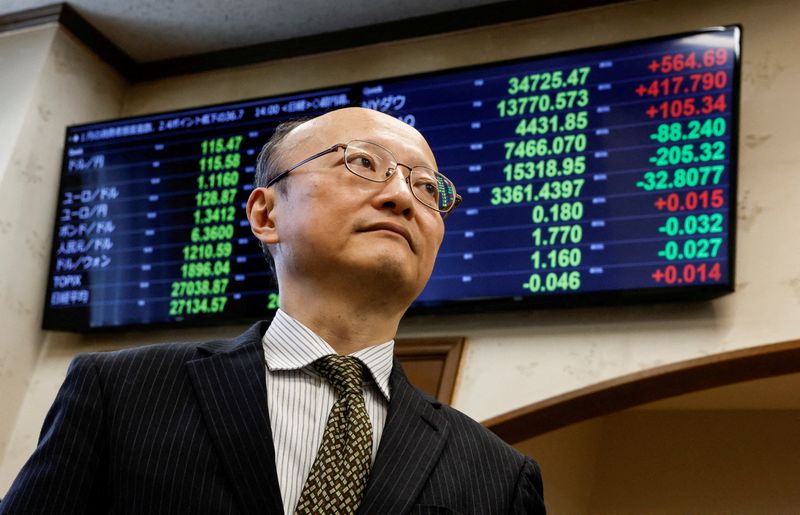
Makiko Yamazaki and Kevin Buckland
TOKYO (Reuters) – Japan is prepared to deal with currency issues around the clock, top currency diplomat Masato Kanda said on Tuesday, as money market data showed the Treasury spent about $35 billion to prop up a falling yen a day earlier.
Kanda did not say whether authorities were behind Monday’s rise in the currency, but traders and a former Japanese official said it bore all the hallmarks of intervention.
“We are ready 24 hours a day, so it doesn’t matter whether it’s London, New York or Wellington,” the finance vice minister for international affairs told reporters.
The central bank’s money market forecasts released late Tuesday showed it expected yen receipts to rise sharply on Wednesday, which could indicate heavy yen buying on Monday as foreign exchange trades typically take two days to clear.
The data shows spending may have been close to a daily record of 5.62 trillion yen – nearly $36 billion at current exchange rates – when Japan intervened in October 2022. If she does so again, it also signals that after weeks of rhetoric she is ready to deal with currency weakness.
Factors other than foreign exchange interventions may affect the money market balance.
Prime Minister Fumio Kishida earlier on Tuesday also refused to engage in discussions about currency moves or interventions.
The yen was last quoted at 157.03 per dollar in New York trading after falling to 160.245 on Monday, notching another 34-year low.
remove advertising
.
While Kanda sidestepped direct questions about intervention, he said authorities would take action if excessive activity fueled by speculators negatively affected people’s daily lives.
“Higher prices for imported goods are said to affect the most vulnerable and could slow Japan’s drive to raise actual wages,” he said.
“The government will have to respond to such steps.”
VERY LIKELY
The yen has fallen for years as global interest rates rose sharply in response to resurgent inflation while they remained near zero in Japan.
That gap sent money out of the yen and into other higher-yielding currencies, and even in March, when Japan raised rates for the first time since 2007, the yen fell.
The momentum and waning expectations of rate cuts in the United States also helped weaken the yen, which has lost more than a third of its value against the dollar since the start of 2021 and has sent Japan into the market to defend its currency in 2022.
Former top currency diplomat Mitsuhiro Furusawa told Reuters it was likely Japan took action again this week.
Krishna Srinivasan, director of the IMF’s Asia-Pacific Department, said the lender sees the Japanese authorities are fully committed to a flexible exchange rate regime and is in close discussions with them.
While the yen’s recent weakness largely reflects differences in interest rates, other factors are increasingly playing a role in the changes, including large carry trade positions, he said in Singapore. He declined to comment specifically on the yen’s movements over the past few days.
remove advertising
.
In carry trades, investors borrow a currency with low interest rates, such as the yen, and sell it to buy higher-yielding currencies.
G7 financial leaders this month agreed to Japan’s proposal to reaffirm that excessive volatility and erratic movements in the foreign exchange market are undesirable.
In the first trilateral financial dialogue since the tripartite leaders’ summit at Camp David last year, the United States, Japan and South Korea agreed to consult on currency markets, acknowledging concerns from Tokyo and Seoul about the decline of their currencies.
The meetings were perceived by many as Tokyo’s approval to enter the foreign exchange market.
($1 = 156.9100 yen)


